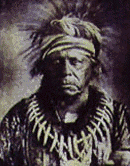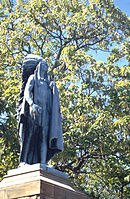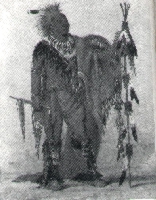

The Black Hawk War was one of the few wars that took place
primarily in
Wisconsin. It is the most important though, because it was the
Indians
last stand against the white man in Wisconsin. The Black Hawk War
has
been described as shameful butchery, and one of the most shameful
episodes in the white man's dealings with the Indians.
When Black Hawk was kicked off his land by white settlers, he was
bitter but left peacefully. He came back after a harsh winter, so
he
could farm, hunt, and live in peace. The white settlers were still
frightened by Black Hawk, even though he just wanted to live in
peace.
When Black Hawk sent three men out with white flags, Major
Tillmen, and
his men, who were half drunk at the time, killed the three Sauk
Indians
because they felt threatened, and didn't understand the Indians
language. Black Hawk only had forty men with him, but after a
battle
with the white men, he was said to have 2,000 blood thirsty
warriors.
Chief Keokuk had not opposed the advance of the white men, and Keokuk and his followers eventually moved west of the Mississippi River. Although a four hundred square mile strip surrounding his village was exempted from the 1832 Black Hawk Purchase, he and his people were eventually moved further, to a reservation in Kansas, where Keokuk died in 1848. In 1883 his remains were moved back to the town named after him and a monument by Nellie Walker erected there in 1913.

The Chief Keokuk Statue stands today in Rand Park, Keokuk, Iowa,
erected by the Keokuk chapter of the Daughters of the American
Revolution
This is Keokuk, the Indian leader who sold Black Hawk's land
Many times Black Hawk tied to surrender, but each time they were
fired
upon because the white men didn't understand them, and felt
frightened
by them. Black Hawk had no way of communicating with the white men
because he didn't talk English. He was captured for a final time
in
August 1832 and placed in a prison until he signed a peace treaty.
Black Hawk was then placed on an Iowa Reservation.

Compiled by: Glenn Welker
This
site has been accessed 10,000,000
times since February 8, 1996.